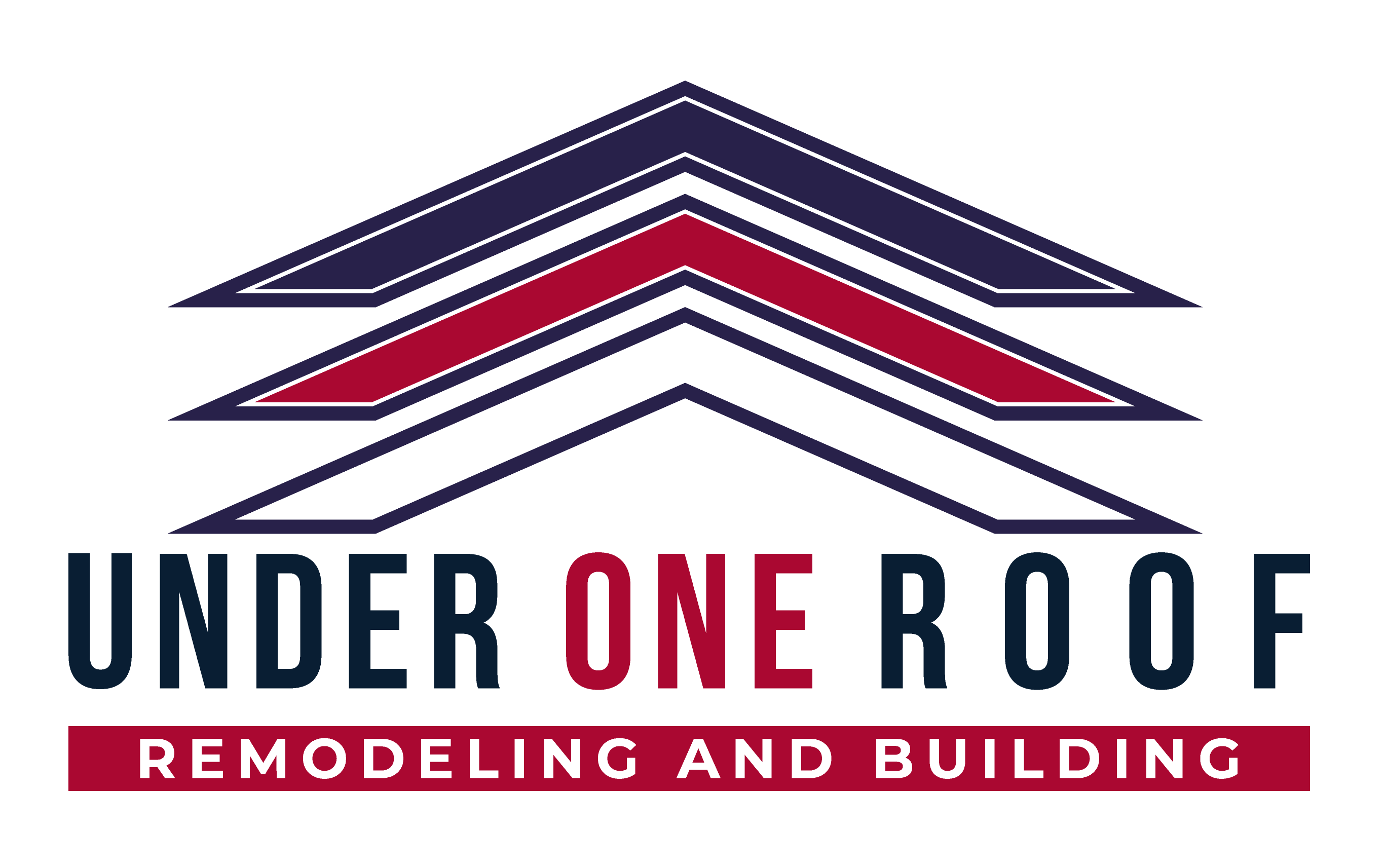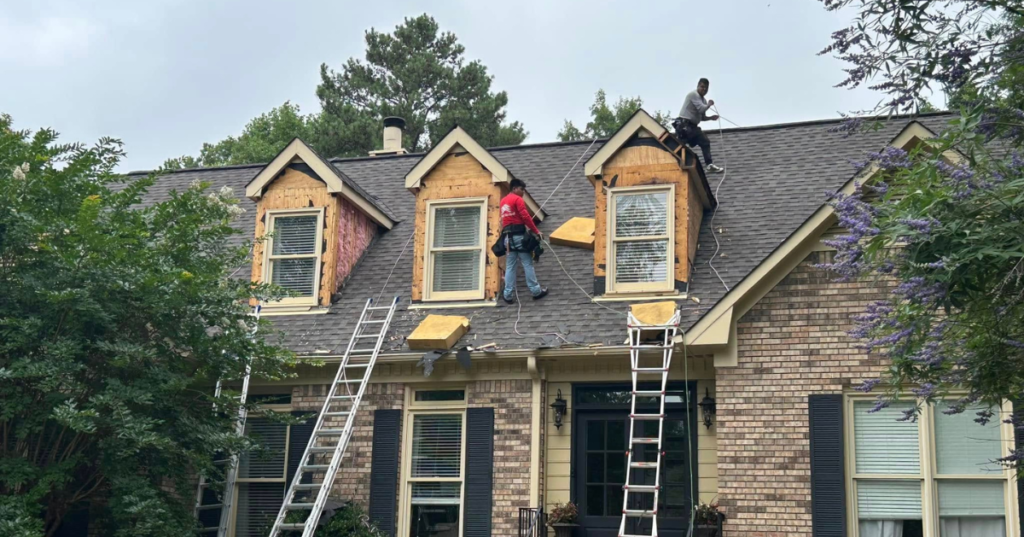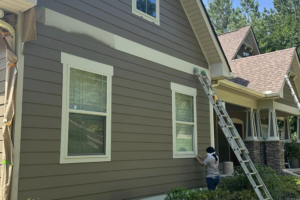Did you know that nearly 30% of homeowners in Birmingham find themselves needing a roof replacement sooner than expected? If you’re one of them, understanding the key steps involved can save you both time and money. From evaluating your current roof condition to hiring the right contractor, every decision matters. You’ll want to know the best materials for your home and how to prepare for the installation process. So, what should you prioritize to guarantee a smooth replacement and long-lasting results?
Key Takeaways
- Conduct a thorough inspection of the current roof to identify damage and document findings for repair or replacement evaluation.
- Evaluate roofing materials suited for Birmingham’s climate, considering durability, cost, and aesthetic preferences for your home.
- Create a detailed budget that includes all costs, unexpected expenses, and potential financing options for roof replacement.
- Research and hire qualified contractors, verify credentials, obtain multiple estimates, and check references for quality assurance.
- Prepare for installation by clearing the area, securing valuables, and discussing timelines with the contractor to minimize disruptions.
Assessing Your Current Roof
To assess your current roof effectively, start by inspecting its overall condition from both the exterior and interior.
Begin outside, checking for common damage like missing shingles, rusted flashing, or signs of wear around chimneys and vents. Look for granules in gutters, as this indicates shingle deterioration. Use binoculars to spot any irregularities from the ground, allowing you to safely assess hard-to-reach areas.
Next, head inside your home. Inspect the ceilings and walls for water stains, which may signify leaks. Pay attention to any sagging areas or mold growth, as these can indicate more serious issues with your roof.
Roof inspection tips suggest using a flashlight to examine the attic, ensuring you look for daylight peeking through the roof boards, which may reveal holes or gaps.
Document any damage you find, noting its location and severity. This will help you establish whether you need minor repairs or a complete roof replacement.
If you’re unsure about your findings, consider hiring a professional for a thorough evaluation. They can provide a detailed report on the roof’s condition and recommend necessary actions.
Choosing the Right Materials
When choosing roofing materials, you’ll want to evaluate various types available, each with unique benefits and drawbacks.
Understanding cost factors is essential, as it will directly impact your budget and long-term value.
Selecting the right materials not only affects aesthetics but also the durability and maintenance of your roof.
Material Types Overview
Choosing the right roofing materials is vital for guaranteeing durability, energy efficiency, and aesthetic appeal. When considering options, metal roofing stands out for its longevity and weather resistance, making it ideal for Birmingham’s varied climate.
You can also explore various shingle options, which offer a balance of affordability and style. Tile durability is another excellent choice, providing a classic look while enhancing insulation benefits.
If sustainability is important to you, sustainable materials, such as recycled shingles or solar tiles, can greatly reduce your environmental footprint. Each material has distinct advantages, so conduct a lifespan comparison to determine the best fit for your home.
Remember to factor in local climate considerations, as this will influence your roof’s performance over time. Installation techniques can also vary based on the material you choose, so it’s vital to hire experienced professionals to guarantee proper application.
Ultimately, your aesthetic choices should reflect both your personal style and the architectural integrity of your home. By weighing these factors, you’ll be equipped to make an informed decision that enhances your home’s value and comfort.
Cost Considerations Explained
Understanding the costs associated with different roofing materials is essential for budgeting your roof replacement project. Each material comes with its own price tag, longevity, and maintenance requirements, which can greatly impact your overall expenses.
Asphalt shingles are often the most budget-friendly option, while metal, tile, and slate roofs can require a higher initial investment but offer durability and energy efficiency.
When selecting materials, consider replacement financing options available to you. These can help spread out the costs over time, making it easier to manage your budget.
Additionally, take into account insurance coverage considerations. Some policies may cover specific materials or installation costs, so check with your provider to understand what’s included.
It’s vital to weigh the long-term benefits of each material against the immediate financial implications. Investing in a high-quality roofing material can save you money in repairs and maintenance down the line.
Ultimately, choosing the right roofing material involves balancing your budget, financing options, and the potential return on investment, ensuring that your home remains protected and aesthetically pleasing for years to come.
Planning Your Budget
Your budget plays an essential role in the roof replacement process, influencing both the materials you select and the overall scope of the project. To effectively plan your budget, start by evaluating your financial resources and determining how much you can allocate for the roof replacement.
Consider the total costs, which may include materials, labor, permits, and potential unexpected expenses.
Explore financing options available to you. Many homeowners rely on loans or payment plans offered by roofing companies to ease the financial burden. Research different lenders to find terms that fit your financial situation.
Don’t forget to factor in any potential insurance coverage that may help offset your costs. If your roof replacement is due to damage, your insurance policy might cover a portion of the expenses. Contact your insurance provider for clarity on your coverage and any deductibles you might face.
As you outline your budget, prioritize essential features like durability and energy efficiency. While it’s tempting to go for lower-cost materials, investing in high-quality options can save you money in the long run by reducing maintenance and replacement needs.
To foster a sense of belonging, connect with others who’ve undergone similar projects; they can provide valuable insights on budgeting and financial planning.
Ultimately, a well-planned budget not only guarantees you’re financially prepared but also helps you make informed decisions that align with your needs and preferences.
Hiring a Qualified Contractor
When hiring a qualified contractor for your roof replacement, start by researching local options to find reputable professionals.
Next, verify their credentials and experience to guarantee they meet industry standards.
Finally, request detailed estimates from multiple contractors to compare pricing and services effectively.
Research Local Contractors
How do you guarantee that your roof replacement project goes smoothly? The answer lies in thoroughly researching local contractors.
Start by gathering a list of potential candidates in your area. Look for contractors with a solid reputation and extensive experience in roof replacement. Online platforms and local community boards often provide contractor reviews that can help you assess their reliability and quality of work.
Once you have a shortlist, pay attention to their project timelines. A qualified contractor should provide a clear schedule, assuring that your project stays on track.
Contact each contractor to discuss your specific needs, and don’t hesitate to ask for references from past clients. This will give you insight into their work ethic and ability to meet deadlines.
Additionally, consider reaching out to friends or neighbors who’ve recently completed similar projects. Their recommendations can be invaluable in finding trustworthy professionals.
By investing time in researching local contractors, you’ll not only assure a smoother roof replacement process but also create a sense of community by supporting local businesses.
Verify Credentials and Experience
After narrowing down your list of potential contractors, verifying their credentials and experience is essential to guarantee you hire a qualified professional for your roof replacement.
Start by checking their roof replacement contractor qualifications. Make sure they hold the necessary licenses and insurance, as these protect you from liability in case of accidents. You can often find this information on their website or by asking directly.
Next, conduct experience verification. Inquire about their years in the roofing industry and the types of projects they’ve handled. A reputable contractor should have a portfolio showcasing previous work, including photos and references from satisfied clients.
Don’t hesitate to contact these references to ask about their experiences, including timelines, quality of work, and how well the contractor communicated throughout the process.
Additionally, look for contractors who are affiliated with professional organizations, as this often indicates a commitment to industry standards.
Request Detailed Estimates
Requesting detailed estimates from potential contractors is essential for making an informed decision about your roof replacement project. By obtaining a thorough estimate, you can guarantee that all aspects of the project are covered. This allows for effective budget planning and helps prevent unexpected costs down the line.
When you reach out for estimates, consider asking the contractors to include the following:
- Cost of materials: Specify the type and quality of materials they’ll use.
- Labor charges: Get clarity on how labor costs are calculated and any potential overtime fees.
- Timeline: Understand how long the roof inspection and replacement will take.
- Warranty information: Inquire about warranties for both materials and workmanship.
- Cleanup and disposal: Guarantee the estimate includes details on cleanup and disposal of old roofing materials.
Once you receive multiple estimates, conduct an estimate comparison. This will help you gauge which contractor offers the best value while still meeting your quality standards.
Preparing for Installation
Preparing for installation is essential to ensuring a best roof replacement process. Before the installation team arrives, you’ll want to focus on effective roof preparation. Start by clearing the area around your home removing any outdoor furniture, decorations, or plants that might obstruct access to your roof. This not only protects your belongings but also helps the crew work more efficiently.
Next, consider the installation timeline. Talk to your contractor about the expected duration of the project and how weather conditions might affect it. Knowing when the work will begin and end allows you to plan accordingly, minimizing disruptions to your daily life.
You should also secure your home’s interior. If you have valuables in the attic, consider moving them to a safer location, as vibrations from the installation process could cause items to fall or be damaged. Additionally, it’s wise to cover any delicate furniture or electronics inside your home to protect them from dust and debris.
Communication with your roofing contractor is vital during this phase. Make sure you’re clear on the specific materials being used and when they’ll arrive. This will help you anticipate any potential delays in the installation timeline.
Finally, if you have pets, make arrangements for their care during the installation. A construction site can be chaotic, and keeping them safe will give you peace of mind.
Understanding the Process
During the roof replacement process, understanding each phase can greatly enhance your overall experience and satisfaction.
You’re not just getting a new roof; you’re investing in roof longevity and ensuring the installation techniques are up to industry standards.
Here’s a breakdown of the key stages involved:
- Initial Inspection: A thorough assessment of your current roof helps identify underlying issues and the necessary materials for replacement.
- Material Selection: Choose the right materials based on durability, climate, and aesthetic preferences. This decision will impact your roof’s performance and lifespan.
- Preparation: Before installation, the area around your home must be prepared. This may involve removing old roofing materials and protecting landscaping.
- Installation: Skilled contractors implement specific installation techniques tailored to your chosen materials. Proper installation is essential for ensuring your roof can withstand harsh weather.
- Final Inspection: After installation, a final inspection guarantees every aspect of the job meets safety and quality standards.
Maintenance After Replacement
Regular maintenance is essential for ensuring the longevity and performance of your newly replaced roof. Engaging in proactive roof care is vital to prevent minor issues from escalating into costly repairs.
Begin with seasonal inspections, ideally at the start of each season. These inspections allow you to identify any potential problems, such as missing shingles, cracked flashing, or accumulated debris that can trap moisture.
During your inspections, pay close attention to the gutters and downspouts. Clogged gutters can lead to water backing up under shingles, causing leaks and structural damage. Clear them of leaves and debris to maintain proper drainage.
It’s also wise to check for any signs of moss or algae growth, especially in shaded areas. If you notice any, consider using a specialized roof cleaner or consult a professional for treatment.
Don’t forget to examine the interior of your home as well. Look for any signs of water damage or dark spots on ceilings and walls, which could indicate leaks. If you spot anything concerning, address it immediately to prevent further damage.
Lastly, consider scheduling a professional inspection every few years. Even if everything appears fine, having a trained eye assess your roof can reveal hidden issues.
In the journey of roof replacement, think of your home as a sturdy ship needing a reliable sail. By carefully evaluating your current roof, selecting the right materials, and hiring qualified contractors like Under One Roof Remodeling and Building, you guarantee your vessel can weather any storm. With proper preparation and ongoing maintenance, your new roof will shield your home for years to come. So, take these steps seriously—after all, a well-protected home is a safe harbor for you and your loved ones.





